 November 20, 2014 John E. Ross, KD8IDJ, Editor
| |||||||||
ARRL Headquarters Closed November 27-28 ARRL Headquarters will be closed for the Thanksgiving holiday on Thursday and Friday, November 27-28. The ARRL Letter will not publish on Thanksgiving Day, Thursday, November 27, and there will be no edition of ARRL Audio News on Friday, November 28. We wish all our members a safe and enjoyable holiday! Four New Section Managers to Start in the New Year ARRL members in the Western Pennsylvania Section have elected elite contester Tim Duffy, K3LR, as their new Section Manager. In a three-way race, Duffy polled 545 votes, Cynthia L. Rushton, WB3CNJ, received 83 votes, and Paul Plants,W3PLP, 62 votes. Ballots were counted Tuesday, November 18, at ARRL Headquarters. Western Pennsylvania Section Manager John Rodgers, N3MSE, of Butler decided to not run for another term after serving since October 2007. He also was Section Manager from 2000 to 2003.
Three other ARRL Sections also will begin the New Year with new Section Managers. In Eastern Massachusetts, Tom Walsh, K1TW, of Bedford, will take the helm of that ARRL Section on January 1. Walsh has been an Assistant Section Manager and was the only candidate for the Section Manager's job. Current SM Phil Temples, K9HI, who has served as Eastern Massachusetts SM since 2011, decided not to run for a new term of office. Temples also served as Section Manager from 1994 to 1996 and from 2001 to 2004. Taking over the top leadership role in the Southern New Jersey Section on January 1 will be Thomas J. "Skip" Arey, N2EI, of Beverly. He was the only nominee for the position. Arey has been the Affiliated Club Coordinator in Southern New Jersey. Incumbent SM George Strayline, W2GSS, opted not to run for another term after serving since 2009. In the West Central Florida Section, Darrell Davis, KT4WX, of Fort Meade, will be the new SM starting in the New Year. He was the only candidate for the position. Davis brings to the office his experience as an Assistant Section Manager, ARESEmergency Coordinator, and Technical Specialist. He will succeed Dee Turner, N4GD, of Pinellas Park, who chose not to run for another term after serving since 2005. The following incumbent Section Managers faced no opposition in the fall election cycle, and they will continue with new terms of office starting January 1, 2015: Dale Bagley, K0KY (Missouri); Matt Anderson, KA0BOJ (Nebraska); Jim Mezey, W2KFV (New York City-Long Island); Tom Dick, KF2GC (Northern New York), and Marc Tarplee, N4UFP (South Carolina). Two-year terms for all successful candidates will begin on January 1, 2015. MARS Volunteers Reach Out to Amateur Community to Test Interoperability The Army and Air Force branches of the Military Auxiliary Radio System (MARS) merged their long-distance radio networks in late October for a 48-hour Department of Defense-sponsored contingency communications exercise. The MARS volunteers provided communication support in the wake of a simulated disruption to the nation's telecommunications infrastructure. In addition to passing message traffic for the Defense Department (DoD), the scenario for the October 27-28 exercise also required MARS stations to interface with the Department of Homeland Security Shared Resources -- or SHARES -- HF network. The plan also called for MARS members -- using their Amateur Radio call signs and operating on amateur frequencies -- to establish two-way communication with Amateur Radio Emergency Service (ARES) leadership or members in as many US counties as possible.
Planning for this particular portion of the MARS exercise began in late September between English and ARRL Emergency Preparedness Manager Mike Corey, KI1U. English said the Defense Department and MARS intend to continue developing this relationship with the Amateur Radio community for future MARS exercises. "This communications exercise [was] sponsored by the DoD to provide MARS operators the opportunity to develop and train interoperability procedures with their state/local ARES Emergency Coordinators and their Amateur Radio colleagues," English explained. Read more. Homeland Security's 2014 National Emergency Communications Plan Incorporates Amateur Radio
The US Department of Homeland Security's 2014 National Emergency Communications Plan (NECP) has incorporated Amateur Radio in its mix of media that could support and sustain communications in a disaster or emergency. The 2014 NECP is the first update since the original plan was released in 2008. The NECP is "the nation's over-arching strategic plan for enhancing emergency communications capabilities and interoperability nationwide," DHS said in announcing the updated plan on November 12.
The NECP also describes changes that lie ahead for emergency communication systems, such as 9-1-1 systems. "In the future, Next Generation 9-1-1 will enhance the capabilities of current 9-1-1 networks, allowing the public to transmit pictures, videos, and text messages that will provide additional situational awareness to dispatchers and emergency responders," the NECP says. The updated NECP stresses the importance of interoperability. It recommends that state, regional, and local administrations "assess their existing governance structures to ensure they are positioned to address current and emerging policy, technology, and planning developments." This effort, the NECP continues, could include the addition of representatives from the Amateur Radio community to statewide interoperability governing bodies and executive committees. The NECP also recommends that federal, state, local, tribal, and territorial jurisdictions "identify domestic and international entities with potential roles in information sharing and the delivery of emergency communications during emergencies," such as Amateur Radio operators. "As appropriate, these entities should be incorporated into training and exercise activities on a more regular basis," the NECP suggests. The Federal Emergency Management Agency (FEMA) -- a part of the Department of Homeland Security -- is headed by ARRL member, W. Craig Fugate, KK4INZ. Amateur Radio Volunteers Turn Out En Masse to Support Chicago Marathon A huge turnout of Amateur Radio volunteers supported communications October 12 for the 2014 Bank of America Chicago Marathon and its 2000 volunteer medical teams. For the first time this year, the Amateur Radio volunteers also shadowed the nine triage units that attended to runners within Grant Park, the marathon's finish line. The hams communicated with the ambulance service, if further medical support was needed. Some of the 120 radio amateurs taking
part in the event ended up walking as many as 9 miles just within the park during their volunteer stints. Some 45,000 runners from every US state and more than 100 countries took part in the Chicago Marathon. Approximately 2.5 million onlookers also enjoyed the ideal weather. This marked the sixth year that the ham radio community has supported this event. Operators came from four states and from cities as far away as Madison and Milwaukee, Wisconsin; Indianapolis, Indiana; Peoria, Illinois, and Pittsburgh, Pennsylvania. Twelve local ham radio clubs were represented. The ham radio volunteers made use of six local repeaters and several simplex channels, starting off at 6:30 AM on race day -- to let organizers know when the medical teams were on site and to assure that medical services and supplies were in place and ready. Eight operators worked at the forward command tent, side by side with event officials, Chicago city services, and other agencies, to provide health-and-welfare traffic to the physician in charge. The ham radio volunteers also interfaced with the medical logistics teams and the ambulance service. The 120 radio amateurs were among some 12,000 volunteers at the race event. Rob Orr, K9RST, who serves as the volunteer lead, has already put out the call for volunteers at next year's marathon. -- Thanks to ARRL Illinois Section News via The ARES E-Letter W1AW Centennial Operations Moving to Delaware, Louisiana, and Puerto Rico The ARRL Centennial W1AW portable operations taking place throughout 2014 from each of the 50 states are now in Florida and Arkansas. They will transition at 0000 UTC on Wednesday, November 26 (the evening of November 25 in US time zones), to Delaware (W1AW/3), Louisiana (W1AW/5), and Puerto Rico (W1AW/KP4). So far during 2014, W1AW has visited each of the 50 states for at least 1 week, and by year's end W1AW will have been on the air from every state at least twice.
Working W1AW/x from each state is worth 5 points per mode/contact, even when working the same state during its second week of activity. To earn the "Worked all States with W1AW Award," work W1AW operating portable from all 50 states. (Working W1AW or W100AW in Connecticut does not count for Connecticut. Participants must work W1AW/1 in Connecticut.) A W1AW WAS certificate and plaque will be available. An ARRL Centennial QSO Party leader board shows participants how many points they have accumulated in the Centennial QSO Party and in the W1AW WAS operations. Log in using your Logbook of The World (LoTW) user name and password, and your position will appear at the top of the leader boards. Results are updated daily, based on contacts entered into LoTW. Working Red Badge Holders Could Be Key to Boosting Your Centennial QSO Party Totals It's getting down to crunch time: The ARRL Centennial QSO Party ends in just about 6 weeks! If you've been procrastinating about building your point totals to the certificate level, two more major opportunities to put some serious points into your log lie just ahead. "Red Badges on the Air" activities will take place on Saturday, November 22, and on Wednesday, December 31.
Point levels for Centennial QSO Party awards have already been established. Participants will need 1000 points to qualify for a first-level certificate, 3000 points for a second-level certificate, 7500 points for a third-level certificate, and 15,000 points for a top-level award certificate. As of November 13, 13,000 participants had attained 1000 points in the QSO points Challenge, and 7000 ops had reached the 3000-point level. The next ARRL Red Badges event gets underway at 0000 UTC on Saturday, November 22 (starting on the evening of Friday, November 21, in US time zones). ARRL officers, elected officials such as Director or Section Manager, as well as Headquarters staffers and volunteers, and other members of the ARRL family will be out in force on both occasions. Contacts with red badge wearers are worth as much as 300 points per contact for working ARRL President Kay Craigie, N3KN. Many stations will try to keep their contacts short; the minimum exchange is a signal report, and any ARRL office, appointment, or member abbreviation is optional. Read more. Riley Hollingsworth to North Carolina Club: Amateur Enforcement "Very Much Alive" Former FCC Special Counsel for Enforcement Riley Hollingsworth, K4ZDH, told the Forsyth Amateur Radio Club that the FCC is still active in the Amateur Radio enforcement arena, even though it's not always apparent. He spoke to the Winston-Salem, North Carolina, club on November 10. "You may not think so, but enforcement is very much alive," said Hollingsworth, who -- although retired -- still keeps up with goings on at the FCC and with the enforcement activities of his successor, FCC Special Counsel Laura Smith. "You just don't hear a lot about it, as you used to," he said, because ham radio news media report only the "big announcements" these days. During his tenure, Hollingsworth routinely released preliminary letters of inquiry and warning notices to radio amateurs suspected of breaking the rules. Now, he said, the FCC is using "the IRS model" of releasing information, partly in response to privacy considerations. "You only see final actions [now]," he said. "So, you don't think a lot's being done, but it's all behind the scenes, and you don't know about it." What is not helpful, he told the club members, is e-mailing or writing Laura Smith or the FCC proper, rudely demanding Commission attention to particular enforcement issues. Hollingsworth said the FCC has received "nasty e-mails to FCC personnel" concerning suspected ham radio rule breaking.
"I'm talking about horrible e-mails, threatening e-mails, threatening to the degree that the security office sometimes gets involved," he said. "We've got to stop this." Hiding behind the anonymity of the Internet, he stressed, gives some within the FCC a bad impression of ham radio and could prove counterproductive. In remarks now familiar to many who have heard him speak at Dayton Hamvention and elsewhere, Hollingsworth also warned his audience members against getting into on-the-air spats with rude or careless operators. "Don't engage people, and don't humor the idiots," he said. "Stupidity can't be regulated, no matter how good the rules are. Just turn the big knob. Every rig has one." Hollingsworth's complete talk appears as Episode 174 of the online Amateur Radio television series HamRadioNow, produced by Gary Pearce, KN4AQ. Read more. -- Thanks to HamRadioNow and Gary Pearce, KN4AQ "Frequency" TV Series Would Reprise Amateur Radio-Themed Movie Mike Baxter, KA0XTT -- Tim Allen's character in the "Last Man Standing" TV show on ABC -- may be getting some competition on the ham bands, as NBC appears poised to launch a television series based on the 2000 movie Frequency, in which ham radio -- aided by some spectacular solar phenomena -- plays a central role in the sci-fi thriller. According to a November 13 article in The Hollywood Reporter, NBC has already committed to the series. Jeremy Carver is writing the script for Warner Brothers Television and will be the series' executive producer. Toby Emmerich, who wrote the movie, will be a co-producer.
While Amateur Radio has made only fleeting appearances in "Last Man Standing," it is an essential plot device in Frequency. In the movie, a New York City fireman, Frank Sullivan, played by Dennis Quaid, re-connects via a bizarre ham radio link with his son, John, 30 years in the future. Jim Caviezel, now a star in the CBS drama, "Person of Interest," portrayed John Sullivan, an NYPD detective. John Sullivan comes across his late father's 1960's-era Heathkit transceiver, through which -- with the help of a quirk of nature and some Hollywood magic -- he is able to communicate with his father through time and space. Read more. -- Thanks to John Bigley, N7UR, Nevada Amateur Radio Newswire New Jersey Radio Amateurs Enter Emergency Antenna-Raising Project in Innovation Competition A group of young Amateur Radio operators from Warren County in Northern New Jersey, has entered its 2013 Dayton Hamvention® Youth Forum project -- the Emergency Antenna Platform System (EAPS) -- in the Boca Bearings Innovation Competition. The group, which calls itself the 721st Mechanized Contest Battalion, developed the device for quickly raising antennas on vertical structures such as lamp posts and flagpoles. In an emergency, a ham radio operator could use the EAPS to put up an antenna and establish a communication link. Devlin Murray, KC2PIX, and Chris Blackwood, KD2CXC, first presented the project at Dayton. Murray and Blackwood delivered a Youth Forum presentation on robotics at the ARRL Centennial National Convention last July in Hartford, Connecticut.
"This project was inspired by Hurricane Sandy," the developers told Boca Bearing in their entry narrative. "Warren County, New Jersey, was hit fairly hard; at one point, even the county's public service communications system was knocked out. Hams pitched in to maintain communications between the various hospitals, shelters, and water distribution sites." The group's entry relates that while setting up a communication post in a mall parking lot in Sandy's aftermath, the operators encountered reception problems. "We wanted to develop a simple system that was easily transported and deployed to raise antennas," they said. The EAPS can be powered from a vehicle battery. While initially intended for emergency use, the EAPS conceivably could be used to erect antennas for public Amateur Radio demonstrations, such as ARRL Field Day. Read more. -- Thanks to Rob Roschewsk, KA2PBT Two Japanese Satellites Will Carry Ham Radio Payloads into Deep Space this Month [UPDATED 2014-11-20 2030 UTC] Two Amateur Radio satellites, Shin'en 2 (Abyss 2) and ARTSAT2: DESPATCH, will be heading into deep space this month. The satellites will hitch a ride with the Japan Aerospace Exploration Agency (JAXA) Hayabusa 2 asteroid mission, which is scheduled to launch on November 29.
A 17 kg, 50 cm diameter polyhedron, Shin'en 2, developed by Kyushu Institute of Technology and Kagoshima University, will carry into deep space an F1D digital store-and-forward transponder, but not the Amateur Radio Mode J linear transponder reported earlier. A linear transponder had been part of the initial design, but Hideo Kambayashi, JH3XCU, said that Japanese regulations would not allow it and that it would have taken a long time to negotiate a variance with regulatory authorities. "So, they gave up the use of the transponder," he said on the AMSAT-BB earlier this week. The data format is posted on the Kagoshima University website. Inclusion of a transponder will offer an opportunity for earthbound radio amateurs to test the limits of their communication capabilities. The project also is hoping to gather listener reports. The Hayabasa 2 project is expected to help pave the way for future lunar rover missions. Hayabusa 2 will make a round trip to the C-type asteroid 1999 JU3, arriving at the asteroid in mid-2018. It then would survey and take samples of the asteroid before departing in December 2019, and return to Earth in December 2020. The Shin'en 2 satellite makes extensive use of carbon-fiber reinforced plastic materials that can be bonded by heat to reduce its weight and the number of hardware fasteners. Shin'en 2 will be placed into an elliptical orbit around the Sun and travel into a deep space between Venus and Mars. Its inclination will be almost zero, which means Shin'en 2 will stay in the Earth's equatorial plane. The distance from the Sun will be between 0.7 and 1.3 AU (an astronomical unit is 149,597,871 km).
The ARTSAT2:DESPATCH "art project" satellite -- a 1U CubeSat -- is a joint project by students at Tama Art University and Tokyo University. It will carry a 30 kg "deep space sculpture" developed using a 3D printer, plus an Amateur Radio payload -- a CW beacon at 437.325 MHz. At its maximum operational distance, it will be some 3 million km (1.86 million miles) from Earth about a week after launch. -- Thanks to AMSAT-UK A Century of Amateur Radio and the ARRL In January 1997 a high-tech, massive, expensive, and very successful DXpedition was mounted to operate as VK0IR from Heard Island in the Antarctic. The 20-man crew, led by KK6EK and ON6TT, made a remarkable 80,673 contacts! The VK0IR story was told in detail in the September 1997 issue of QST.
The Phase 3D amateur satellite had been in the works for some time and was nearing its launch date. A five-part series of QST articles in 1996 and 1997 described the bird and how hams could use it. As told in the June 1997 issue of QST, for his Eagle Scout public service project, Brian, KC4LLD, volunteered to build the Phase 3D shipping container. The project eventually required the help of 21 other Scouts to complete.
On August 6, 1997, Gate 3 of the vanity call sign program was opened, with about 1500 immediate applicants. During 1997, Congress considered the wording of a bill to make it illegal to listen in on cellular telephone signals and to market equipment that covered cellular service frequencies. The ARRL put forth a successful effort to be sure that radio amateurs would not be affected by the bill. The K7RA Solar Update Tad Cook, K7RA, Seattle, Washington, reports: The average daily sunspot numbers were up this past week by nearly 14 points to 98.9, while average daily solar flux jumped 25 points to 164.4.
The predicted planetary A index is 12 on November 20-21; 10 on November 22; 12 on November 23-24; 8 on November 25; 5 on November 26-December 3; 12, 10, and 8 on December 4-6; 5 on December 7-10, and 10, 15, 20, 15, 12, 10, 8, 10 and 12 on December 11-19. This weekly "Solar Update" in The ARRL Letter is a preview of the "Propagation Bulletin" issued each Friday. The latest bulletin and an archive of past propagation bulletins is on the ARRL website. In tomorrow's bulletin look for an updated forecast and reports from readers. Send me your reports and observations. Just Ahead in Radiosport
See the ARRL Contest Calendar for more information. Upcoming ARRL Section, State, and Division Conventions and Events
Find conventions and hamfests in your area.
Subscribe to...
Free of charge to ARRL members...
Find ARRL on Facebook | |||||||||
 Duffy, who lives in West Middlesex, Pennsylvania, has been an ARRL member and radio amateur for 42 years. He has served for 4 years as the Atlantic Division representative to the ARRL Contest Advisory Committee. Duffy also has been an active member of ARES and RACES and has extensive net and traffic-handling experience.
Duffy, who lives in West Middlesex, Pennsylvania, has been an ARRL member and radio amateur for 42 years. He has served for 4 years as the Atlantic Division representative to the ARRL Contest Advisory Committee. Duffy also has been an active member of ARES and RACES and has extensive net and traffic-handling experience.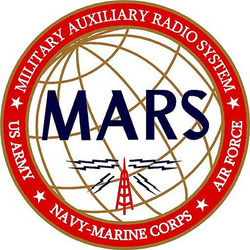 "During the exercise, MARS Headquarters tasked MARS members to reach out to ARES and Amateur Radio operators in as many counties across the US as possible, using amateur HF as well as VHF and UHF frequencies," explained Army MARS Program Manager, Paul English, WD8DBY. According to English, preliminary results showed that MARS-to-Amateur Radio contacts were made with approximately one-half of the more than 3000 US counties. Direct radio contacts with Amateur Radio operators or contacts made via an Amateur Radio net during the 48-hour exercise were counted as county contacts, he said.
"During the exercise, MARS Headquarters tasked MARS members to reach out to ARES and Amateur Radio operators in as many counties across the US as possible, using amateur HF as well as VHF and UHF frequencies," explained Army MARS Program Manager, Paul English, WD8DBY. According to English, preliminary results showed that MARS-to-Amateur Radio contacts were made with approximately one-half of the more than 3000 US counties. Direct radio contacts with Amateur Radio operators or contacts made via an Amateur Radio net during the 48-hour exercise were counted as county contacts, he said.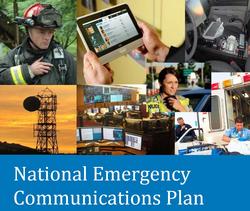 "[A]mateur radio operators...can be important conduits for relaying information to response agencies and personnel when other forms of communications have failed or have been disrupted," the NECP states.
"[A]mateur radio operators...can be important conduits for relaying information to response agencies and personnel when other forms of communications have failed or have been disrupted," the NECP states.
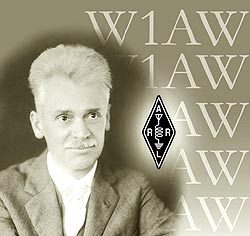 The
The .jpg)
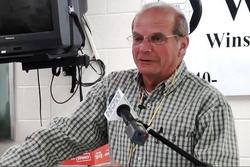
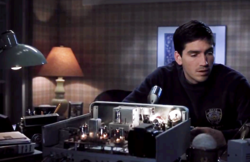
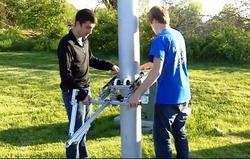
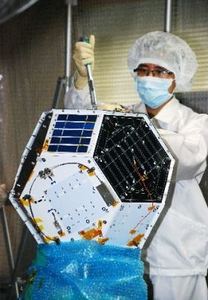

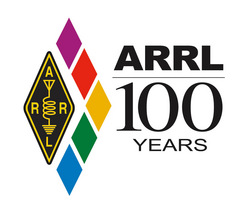 The ARRL Board of Directors designated 1997 as Amateur Radio's Year of Public Service, with two aims. One was to publicize ham radio's major role in public service over its many decades of existence. The other was a large public relations effort to tell non-hams about ham radio.
The ARRL Board of Directors designated 1997 as Amateur Radio's Year of Public Service, with two aims. One was to publicize ham radio's major role in public service over its many decades of existence. The other was a large public relations effort to tell non-hams about ham radio.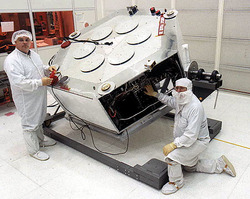
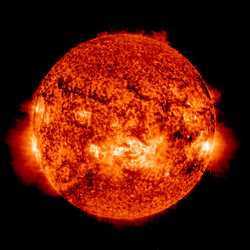 The predicted solar flux is 175, 180, 185, and 180 on November 20-23; 170, 150, 140, and 130 on November 24-27; 120 on November 28-29; 115 on November 30-December 6; 135 and 155 on December 7-8; 165 on December 9-10, and 160 on December 11-15. Solar flux peaks at 170 on December 17-19.
The predicted solar flux is 175, 180, 185, and 180 on November 20-23; 170, 150, 140, and 130 on November 24-27; 120 on November 28-29; 115 on November 30-December 6; 135 and 155 on December 7-8; 165 on December 9-10, and 160 on December 11-15. Solar flux peaks at 170 on December 17-19.







